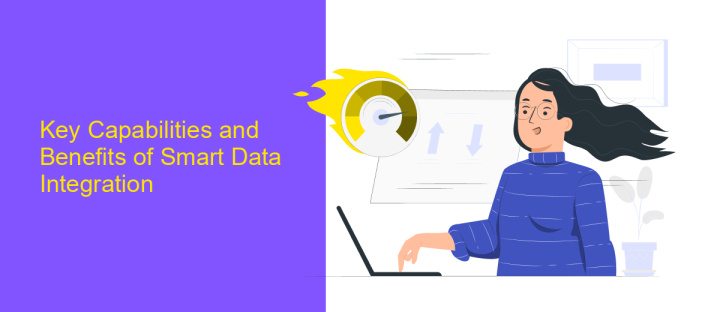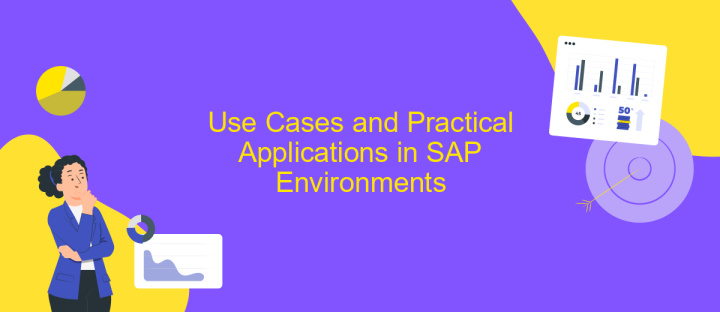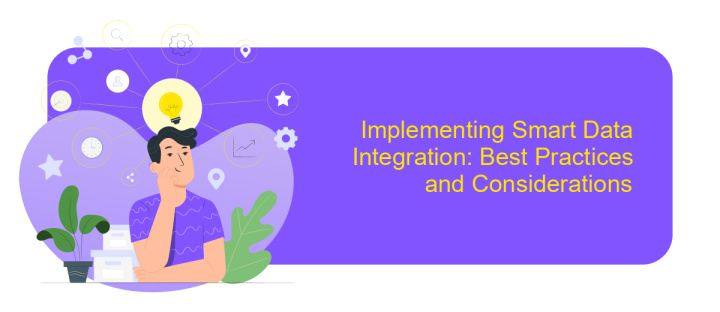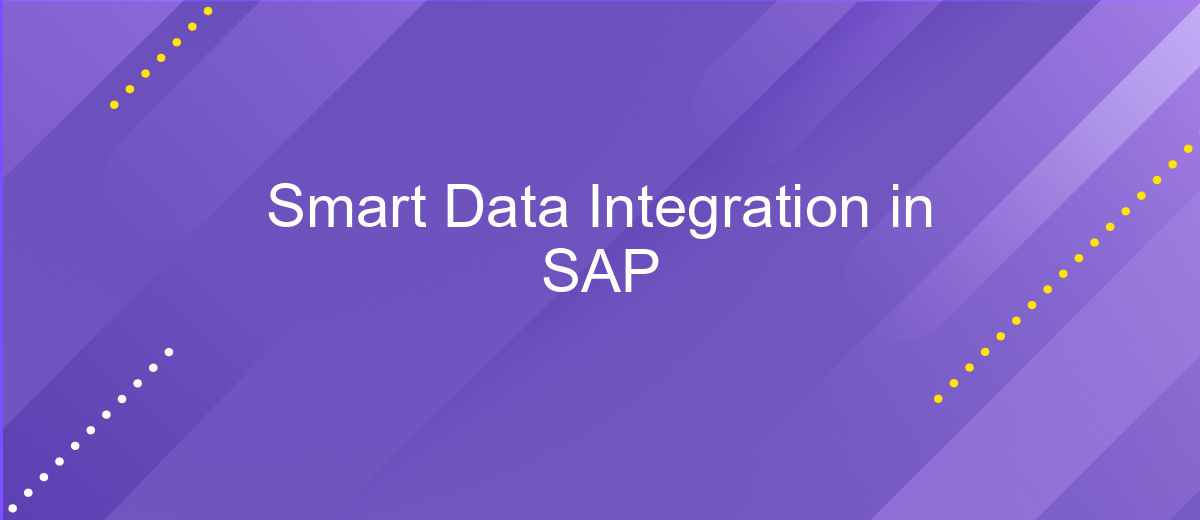Smart Data Integration in SAP
In today's rapidly evolving digital landscape, businesses are inundated with vast amounts of data from diverse sources. Smart Data Integration in SAP offers a robust solution to seamlessly consolidate, manage, and analyze this data, enabling organizations to derive actionable insights and drive strategic decision-making. By leveraging SAP's advanced integration capabilities, companies can enhance operational efficiency, improve data accuracy, and maintain a competitive edge in the market.
Understanding Smart Data Integration: Bridging the Gap in SAP Landscapes
Smart Data Integration (SDI) in SAP is a transformative approach to data management, enabling seamless connectivity and data flow across diverse systems. It addresses the challenges of integrating data from various sources, ensuring that businesses can access and utilize data efficiently. SDI is crucial for organizations looking to enhance their data-driven decision-making processes and maintain a competitive edge in today's fast-paced digital landscape.
- Real-time data integration: SDI allows for the synchronization of data in real-time, ensuring that businesses have access to the most current information.
- Scalability: It supports the integration of large volumes of data, accommodating the growth of organizational data needs.
- Flexibility: SDI can connect with a wide range of data sources, both cloud-based and on-premises, offering versatility in data management.
- Data quality: The integration process includes data cleansing and transformation, ensuring high-quality data is available for analysis.
By bridging the gap between disparate data sources, Smart Data Integration in SAP empowers businesses to create a unified data environment. This not only enhances operational efficiency but also provides a robust foundation for advanced analytics and reporting, driving strategic insights and business growth.
Key Capabilities and Benefits of Smart Data Integration

Smart Data Integration in SAP offers a comprehensive suite of capabilities designed to streamline data processes across diverse systems. One of the key features is its ability to seamlessly connect and integrate data from multiple sources, ensuring consistency and accuracy. This integration is facilitated by advanced data mapping and transformation tools, which allow for real-time data processing and analytics. Additionally, SAP's smart integration supports both on-premise and cloud-based systems, providing flexibility and scalability to meet evolving business needs.
The benefits of utilizing Smart Data Integration are substantial. Businesses can leverage these capabilities to enhance decision-making processes by accessing real-time insights from integrated data. Moreover, the automation of data workflows reduces manual intervention, minimizing errors and increasing operational efficiency. For organizations looking to optimize their integration processes, services like ApiX-Drive can be instrumental. ApiX-Drive offers user-friendly solutions for configuring integrations, further simplifying the data management landscape. Overall, Smart Data Integration empowers businesses to harness the full potential of their data assets, driving innovation and competitive advantage.
Use Cases and Practical Applications in SAP Environments

Smart Data Integration (SDI) in SAP environments offers versatile solutions to streamline business processes and enhance decision-making. By integrating diverse data sources, SAP SDI enables organizations to leverage real-time insights, optimize operations, and drive innovation.
1. Real-time Analytics: SAP SDI allows businesses to analyze data from various sources in real-time, facilitating timely and informed decision-making. This capability is crucial for industries like finance and retail, where swift responses to market changes are essential.
2. Data Consolidation: Companies can consolidate data from disparate systems into a single SAP environment, improving data consistency and reducing redundancy. This integration simplifies reporting and ensures a unified view of enterprise data.
3. Process Automation: By integrating IoT devices and other external data sources, SAP SDI automates workflows, enhancing efficiency and reducing manual intervention. This is particularly beneficial in manufacturing, where automation can lead to significant cost savings.
In conclusion, the practical applications of Smart Data Integration within SAP environments are vast and varied. From enhancing real-time analytics to streamlining data consolidation and automating processes, SDI empowers businesses to harness the full potential of their data, driving growth and innovation across industries.
Implementing Smart Data Integration: Best Practices and Considerations

Implementing Smart Data Integration (SDI) in SAP requires a strategic approach to ensure seamless data flow and operational efficiency. The first step is to understand the specific data needs and integration goals of your organization. This involves assessing existing data sources and determining how they align with business objectives. Proper planning and analysis are crucial to avoid potential pitfalls.
Once the groundwork is laid, focus on selecting the right tools and technologies that support SDI within SAP. This includes evaluating compatibility, scalability, and security features. It's essential to choose solutions that can adapt to future data requirements and technological advancements.
- Ensure data quality and consistency through validation and cleansing processes.
- Implement robust security measures to protect sensitive data during integration.
- Leverage automation to streamline data integration tasks and reduce manual intervention.
- Continuously monitor and optimize data integration processes for performance improvements.
Finally, foster collaboration among cross-functional teams to ensure successful implementation. Involve stakeholders from IT, business, and data management departments to align integration efforts with organizational goals. Regular training and updates on SDI tools and best practices will empower teams to maximize the benefits of smart data integration in SAP.
- Automate the work of an online store or landing
- Empower through integration
- Don't spend money on programmers and integrators
- Save time by automating routine tasks
Future Trends and Innovations in Smart Data Integration for SAP
As the digital landscape evolves, smart data integration in SAP is set to embrace several transformative trends. One significant development is the rise of AI-driven integration tools that enhance data accuracy and streamline processes. These tools will enable more efficient handling of complex data sets, reducing manual intervention and minimizing errors. Furthermore, the integration of blockchain technology promises to enhance data security and transparency, providing a tamper-proof ledger for transactions and data exchanges within SAP systems.
Another emerging trend is the growing adoption of cloud-based integration platforms like ApiX-Drive. These platforms simplify the integration process by offering pre-built connectors and automated workflows, allowing businesses to seamlessly connect SAP with various applications and services. This trend towards automation and user-friendly interfaces will empower organizations to quickly adapt to changing business needs and leverage real-time data insights. As these innovations continue to mature, they will play a crucial role in shaping the future of smart data integration for SAP, driving efficiency and innovation across industries.
FAQ
What is Smart Data Integration (SDI) in SAP?
How does SDI differ from traditional ETL tools?
What are the key components of SAP SDI?
Can SDI be used for cloud-based data integration?
How can businesses automate data integration processes with SAP SDI?
Apix-Drive is a universal tool that will quickly streamline any workflow, freeing you from routine and possible financial losses. Try ApiX-Drive in action and see how useful it is for you personally. In the meantime, when you are setting up connections between systems, think about where you are investing your free time, because now you will have much more of it.


